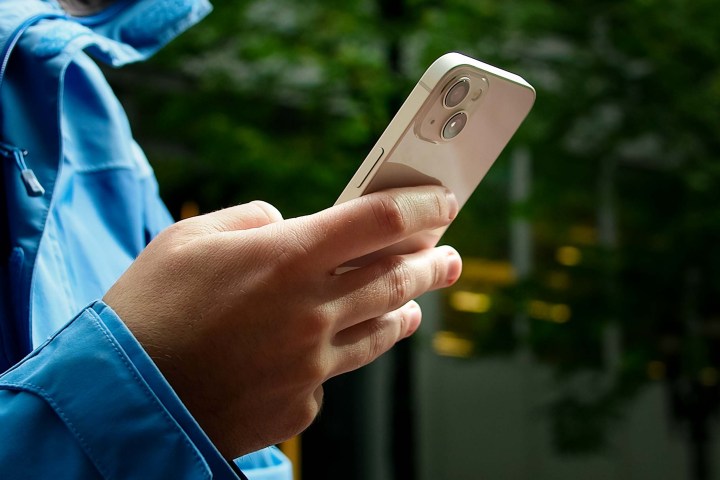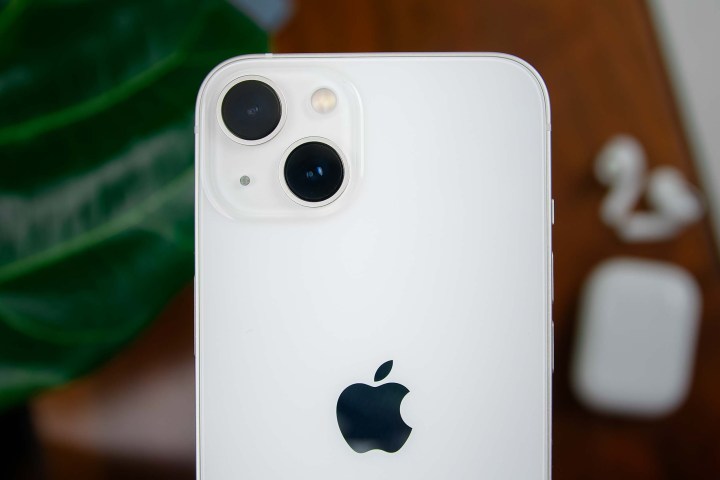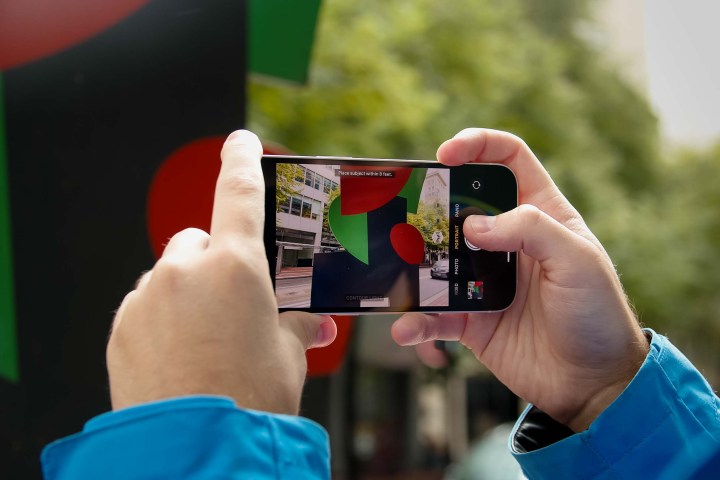You know summer has ended when Apple unveils its latest series of iPhones. This year, it’s the iPhone 14‘s turn to take center stage, offering a number of improvements to its predecessor from last year, the iPhone 13. This includes a pair of upgraded rear camera lenses and a new Emergency SOS Over Satellite feature. However, with a very similar design and the same internal processor, does it really warrant an upgrade if you already own last year’s model? We find out in this comparison test pitting the new iPhone 14 against the veteran iPhone 13.
Specs
| iPhone 13 | iPhone 14 | |
| Size | 146.7 x 71.5 x 7.7mm (5.78 x 2.81 x 0.30 inches) | 146.7 x 71.5 x 7.8mm (5.78 x 2.81 x 0.31 inches) |
| Weight | 174 grams (6.14 ounces) | 172 grams (6.07 ounces) |
| Screen size | 6.1-inch Super Retina OLED | 6.1-inch Super Retina OLED |
| Screen resolution | 2532 x 1170 pixels (460 pixels per inch) | 2532 x 1170 pixels (460 pixels per inch) |
| Operating system | iOS 15 (upgradeable to iOS 16) | iOS 16 |
| Storage | 128GB, 256GB, 512GB | 128GB, 256GB, 512GB |
| MicroSD card slot | No | No |
| Tap-to-pay services | Apple Pay | Apple Pay |
| Processor | Apple A15 Bionic | Apple A15 Bionic |
| RAM | 4GB | 4GB |
| Camera | Dual-lens 12-megapixel wide and 12MP ultrawide rear, 12MP TrueDepth front | Dual-lens 12MP wide and 12MP ultrawide rear, 12MP TrueDepth front |
| Video | 4K at up to 60 frames per second, 1080p at 240 fps | 4K at up to 60 fps, 1080p at 240 fps |
| Bluetooth version | Bluetooth 5.0 | Bluetooth 5.3 |
| Ports | Lightning connector | Lightning connector |
| Fingerprint sensor | No, FaceID instead | No, FaceID instead |
| Water resistance | IP68 | IP68 |
| Battery | 3,240mAh
Fast charging (20W charger sold separately) MagSafe wireless charging (15W) Qi wireless charging (7.5W) |
TBC
Fast charging (20W charger sold separately) MagSafe wireless charging (15W) Qi wireless charging (7.5W) |
| App marketplace | Apple App Store | Apple App Store |
| Network support | All major carriers | All major carriers |
| Colors | Black, blue, green, white, and red | Midnight, Purple, Starlight, blue, red |
| Prices | $699+ | $799+ |
| Review score | 4.5 out of 5 stars | News |
Design, display, and durability
 iPhone 13 held in hand." width="720" height="480" />
iPhone 13 held in hand." width="720" height="480" />If you’ve seen the
Exactly the same goes for the newer phone’s display. At 6.1 inches and featuring a Super Retina XDR OLED, it even contains the same number of pixels as the
Rounding off their equality, both devices are just as durable as each other. They each feature Ceramic Shield glass, as well as an IP68 rating for dust and water resistance. No prizes for guessing that this round is a tie.
Winner: Tie
Performance, battery life, and charging

Again, you’re going to find it difficult to separate the iPhone 14 and
They also come with the same amount of internal memory as standard: 128GB. This can be bumped up to either 256GB or 512GB with both phones for a little extra outlay. Neither offers a slot for microSD cards, so don’t go too crazy with the photos and downloads.
Turning to the battery, Apple is claiming the iPhone 14 can manage 20 hours of video playback. It isn’t, however, sharing the exact size of the new phone’s battery, so we can’t directly compare it with the
Winner: Tie
Cameras

It’s here where things become semi-interesting. The iPhone 14 has the same basic dual-lens rear camera setup, but Apple has updated the lenses themselves in subtle ways. Its 12-megapixel main (wide) lens features a larger sensor and slightly more pixels, along with an f/1.5 aperture (as opposed to the f/1.6 aperture on the
At this early stage, it isn’t possible to say that these minor upgrades offer a significant improvement in photograph quality. That said, Apple is promising “2.5x better” low‑light photos using the main wide lens and “2x better” low-light pics on the ultrawide. Still, without getting our hands on the new devices, we can’t corroborate this just yet.
Winner: Tie
Software and updates

The iPhone 14 runs on iOS 16 right out of the box, while the
In terms of updates, the iPhone 14 will be supported for one more year than the
Winner: Tie
Special features

In the past, you may have struggled to find a difference in special features between an iPhone and its immediate successor. This is not quite the case this time around, despite the iPhone 14 and
Such features could potentially be life-saving for a fair number of people, so even though the iPhone 14 has no other new special features, these two additions give it the win.
Winner: iPhone 14
Price and availability
The Apple iPhone 14 will be available to pre-order directly from Apple start on September 9. It starts at $799, with the 256GB and 512GB models costing $899 and $1099, respectively. It will be supported by all major networks and sold widely online.
The
Overall winner: Apple iPhone 14
Yes, there is really very little in it, but the iPhone 14 gets the win. Its two new emergency features may make a real difference to the lives of at least some people, while there remains a possibility — which we still have to test for — that its cameras and battery will be better than the iPhone 13‘s. Of course, the designs, displays, software, and performance of both phones are more or less identical, so if you already own an



